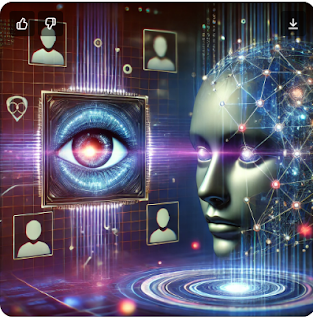AI in Nutrition: How Artificial Intelligence is Reshaping Dietary Science and Health
1. Key Applications of AI in Nutrition Research
Automated Dietary Assessment
AI-powered systems now analyze food intake with remarkable accuracy. By processing images of meals (captured via smartphones), algorithms estimate calorie counts, macronutrients, and even micronutrients. For example, apps like FoodLogger use computer vision to identify foods and portion sizes, reducing human error in tracking.
Tip: Use AI-driven apps to monitor your diet—snap a photo, and let the tool handle the rest.
Personalized Nutrition Plans
AI creates hyper-personalized meal plans by analyzing genetics, lifestyle, and health data. Startups like Nutrino combine machine learning with clinical research to suggest diets for conditions like diabetes or obesity.
Example: A study showed AI-generated plans for type 2 diabetics improved blood sugar levels by 23% compared to standard advice.
Disease Prediction and Management
AI models predict malnutrition risks and diet-related diseases. For instance, deep learning algorithms analyze medical records and dietary habits to forecast conditions like cardiovascular disease.
Case Study: Researchers at MIT developed an AI that predicts celiac disease risk with 85% accuracy using gut microbiome data.
2. Cutting-Edge AI Technologies in Nutrition
Natural Language Processing (NLP)
NLP enables chatbots like DietBot to offer real-time dietary advice. These tools parse user queries (e.g., “What’s a low-carb snack?”) and generate actionable responses.
Deep Learning and Computer Vision
Deep learning models, such as convolutional neural networks (CNNs), excel at food
recognition. Apps like SnapCalorie use these to estimate portion sizes and nutrients from images.
Generative AI (GPT Models)
GPT-4 and similar models synthesize vast research data to generate evidence-based recommendations. For example, AI can draft systematic reviews on dietary trends in hours, not months.
Tool Alert: Explore GPT-powered nutrition advisors on www.freetoolss.online for instant meal ideas and research summaries.
3. Ethical Challenges and Solutions
Bias in Data and Algorithms
AI trained on skewed datasets may overlook diverse populations. A 2023 study found most nutrition AI tools were tested on high-income populations, limiting their global applicability.
Fix: Advocate for inclusive datasets and transparency in AI training.
Privacy Concerns
Dietary apps collect sensitive health data. Ensure tools comply with regulations like GDPR and use encryption.
Accountability Gaps
Who’s responsible if an AI recommends harmful advice? Clear guidelines are needed to assign liability between developers and healthcare providers.
4. Future Trends to Watch
AI-Powered Gut Health Analysis: Emerging tools analyze stool samples via AI to recommend probiotic diets.
Real-Time Nutrient Tracking: Wearables integrated with AI will soon monitor glucose and vitamin levels continuously.
Global Accessibility: Efforts are underway to adapt AI tools for low-income regions, addressing malnutrition.
5. Practical Tips to Leverage AI for Better Health
Try a Diet Chatbot: Use free AI chatbots for quick answers to nutrition questions.
Track with Precision: Apps like MyFitnessPal now integrate AI for smarter logging.
Stay Informed: Follow platforms like www.freetoolss.online for updates on free AI nutrition tools.
Meta Description: Discover how AI is revolutionizing nutrition research—from personalized diets to ethical AI tools. Explore real-world applications and free resources at www.freetoolss.online.
Keywords: AI in nutrition, dietary assessment AI, personalized nutrition, AI health tools, ethical AI, www.freetoolss.online






.PNG)





